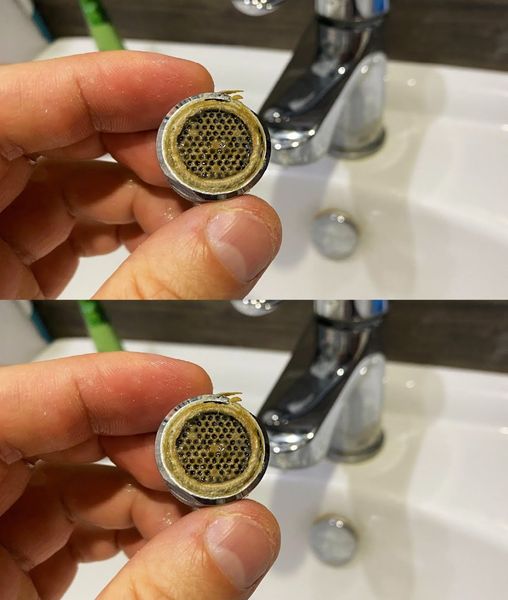ADVERTISEMENT
Quick and Easy Faucet Cleaning: Removing Scale and Limescale in 5 Minutes
If you’ve ever noticed unsightly mineral buildup on your faucets, you’re not alone. Limescale and hard water deposits are common problems in many households, and they can make even the nicest faucets look dull and dirty. The good news is that removing scale and limescale doesn’t have to be a time-consuming or complicated process. In fact, with the right technique, you can clean your faucets and restore their shine in just five minutes.
In this article, we’ll show you how to quickly and easily remove scale and limescale from your faucets with simple tools and ingredients you likely already have in your home. Let’s get started!
What Is Limescale and Why Does It Build Up?
Limescale is a hard, chalky substance that forms when mineral-rich water evaporates, leaving behind calcium and magnesium deposits. This is particularly common in areas with hard water, which is water that has a high mineral content. Limescale can build up on faucets, showerheads, and inside pipes, leaving a white or cloudy residue. Over time, it can cause your faucets to lose their luster and even affect water flow.
Luckily, removing limescale and scale buildup is simple with the right cleaning products and techniques. Here’s a fast and effective method you can use to restore your faucets to their original shine.
What You’ll Need:
- White vinegar or lemon juice (both are natural acids that help dissolve limescale)
- A plastic sandwich bag or plastic wrap
- Rubber bands or twist ties
- A soft cloth or sponge
- Baking soda (optional for tougher stains)
- Old toothbrush (optional for scrubbing)
Step-by-Step Guide: Removing Limescale in 5 Minutes
1. Prepare Your Cleaning Solution
White vinegar is one of the most effective natural cleaners for dissolving limescale. If you don’t have white vinegar, lemon juice can be a great substitute, as its natural acidity also helps break down mineral deposits.
- For vinegar: Pour enough white vinegar into a plastic sandwich bag or container to completely submerge the faucet spout.
- For lemon juice: Squeeze fresh lemon juice or use bottled lemon juice to cover the affected areas.
2. Apply the Vinegar or Lemon Juice
Once you have your cleaning solution ready, it’s time to target the limescale on your faucet.
- Wrap the Bag Around the Faucet: If you’re using a sandwich bag, simply slip it over the faucet’s spout and let the vinegar or lemon juice soak the mineral buildup.
- Use Plastic Wrap for Large Areas: For larger faucets or faucets with buildup around the handles, plastic wrap can be more effective. Wrap the plastic around the faucet, ensuring that the affected areas are soaked in the solution.
- Secure the Bag or Plastic Wrap: Use rubber bands or twist ties to secure the bag or plastic wrap tightly around the faucet, ensuring the solution stays in contact with the limescale buildup.
3. Let It Soak
Allow the vinegar or lemon juice to soak into the limescale for about 5–10 minutes. The acid will begin to break down the mineral deposits, loosening the scale so it can be easily wiped away. If you’re dealing with particularly tough or stubborn limescale, you may want to let it sit for a little longer, up to 15–20 minutes.
4. Scrub Away the Buildup
After the soaking time, it’s time to scrub away the loosened scale.
- Use a Soft Cloth or Sponge: Start by gently wiping away the dissolved limescale with a soft cloth or sponge. The buildup should come off easily, leaving your faucet looking much cleaner.
- Use a Toothbrush for Stubborn Areas: If any areas are still showing signs of limescale, dip an old toothbrush in the vinegar or lemon juice solution and scrub the spots. The bristles will help get into crevices and remove any remaining deposits.
For Complete Cooking STEPS Please Head On Over To Next Page Or Open button (>) and don’t forget to SHARE with your Facebook friends
ADVERTISEMENT
ADVERTISEMENT
